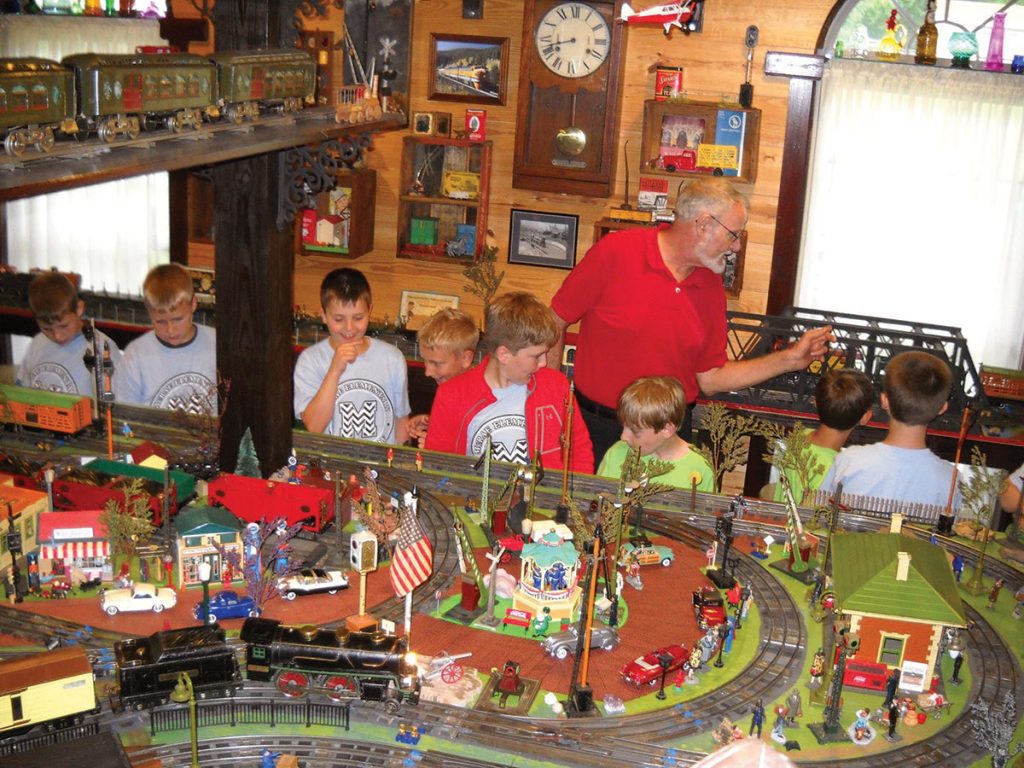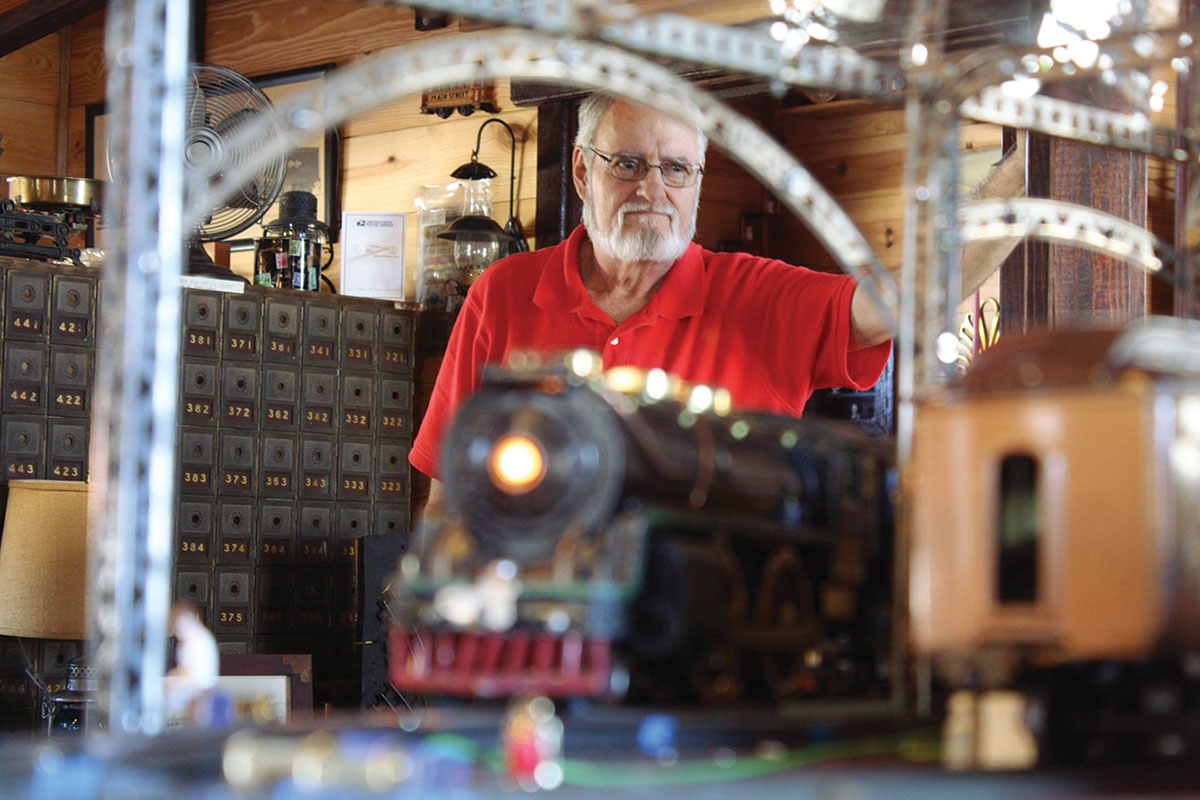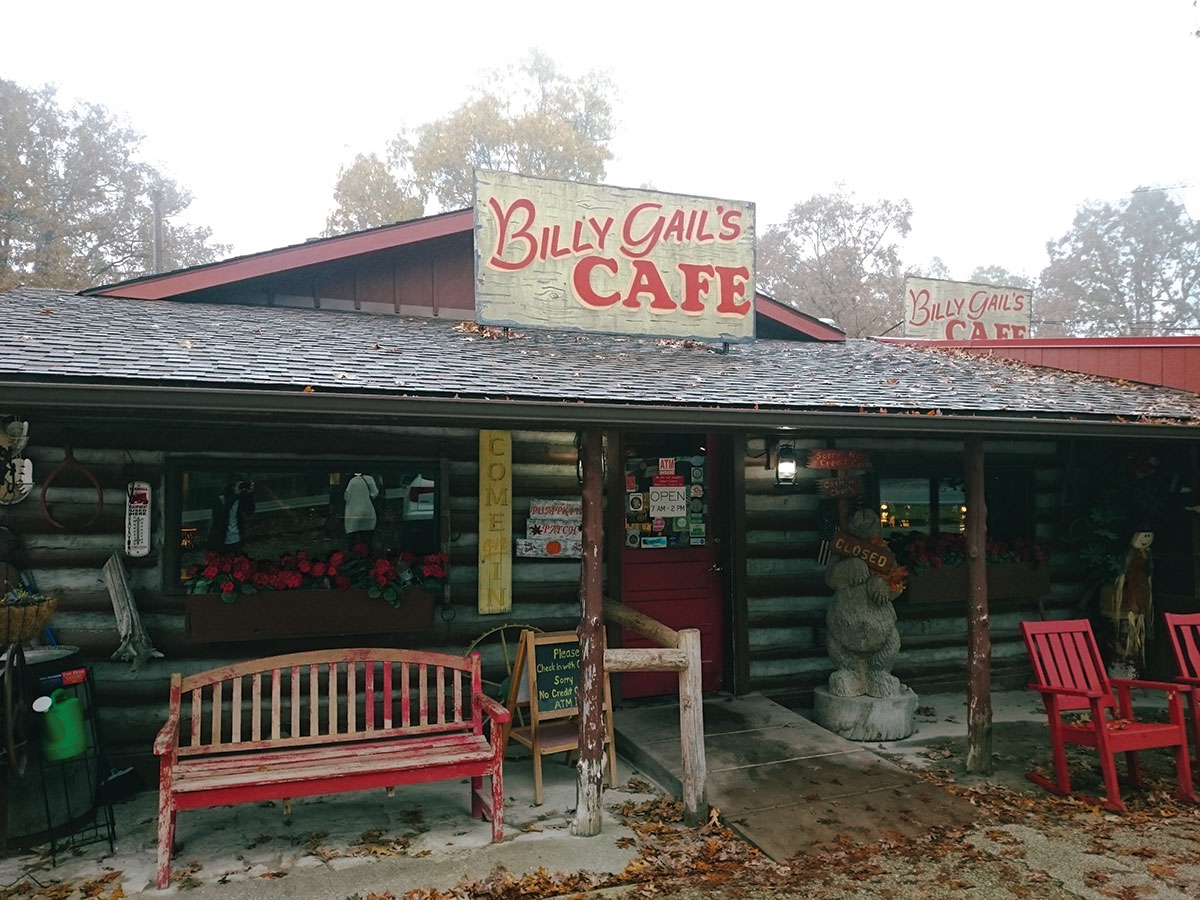
Wayne Ruland was 4 years old when his father Edward, an avid toy train collector, gave him a beautiful blue, black, yellow and red wooden train handmade by one of his father’s friends.
Wayne treasured that train and kept it in excellent condition, even when in later years other children played with it resulting in minor damage. That train is now an honored member of Wayne’s collection.
Edward grew up in New Jersey, which is where his children were raised as well. As a child of 8 he began making his own trains by scouring for metal behind factories, buying only wheels and motors. His trains were distinctive, common and simple. Wayne and his brother Gary were fascinated by everything that moved. The collections grew, and the boys continually pestered their father to make a collection home in the basement, which he did. Then people found out.
“Firemen, the garbageman, friends and neighbors used to stop by to see the trains, bringing their own favorites,” Wayne said. “We explained we couldn’t afford to buy the trains but would give them a good home, and most gave us their trains.”
At 27, Wayne married the love of his life, Susan. After marrying, the couple stayed in Wisconsin for a short, then they moved to Heber Springs, Ark.
The second part of the story is Wayne’s lifelong fight against arthritis. The problem first came to light when he was in the fourth grade and hurt his ankle. The family soon discovered young Wayne had juvenile arthritis. He has been through 21 surgeries and declared disabled while still young man. Wayne turned this lifelong problem into an opportunity to reach out to everyone, especially to children.
The idea for the museum came after the death of Edward and Gary when the three collections were combined. Wayne received a small inheritance from his father, which he and Susan decided to use to create the Ruland Junction Toy Train Museum. The museum was not intended for large crowds but for more intimate interactions. After the two-story outer shell was constructed, Wayne proceeded to form the interior and finish his museum building. The building looks like a train depot, platform and all. Wayne also built easy access stairs for himself and those who came to visit.
Next came the most important decision: the intent of the museum displays. Wayne decided to combine four purposes in one package of real train memorabilia and multiple toy train layouts. The museum is the result of 90 years of family collecting.
The first purpose is to serve as an attraction to all toy train hobbyists. Kids to oldsters love to wander through the exhibits, viewing toy trains, including Wayne’s original blue, black, yellow and red train and a metro line
The second purpose is to instill in all children the belief if they want something, they can do it; and the more often they do, the better they get. Wayne uses his tours to instill a belief in themselves in the form of a fever that will never go away.
The third purpose is to provide a snapshot not only of the history of trains but also of our nation’s history. The four fully functional layouts include churches, houses, gazebos and public buildings, as well as trees and park benches. People are seen working, walking the streets and celebrating holidays like Christmas. Scenes represent particular eras so the total effect is like a patchwork quilt of American history. Three other layouts are still being refined and will add to the quilt.
The fourth, and perhaps the most important purpose of the museum, is to serve as a venue for special needs children, especially those with autism. Wayne wants the museum to help connect those children with themselves and others while gaining self-respect through working on and contributing to the displays.
When Daniel Hipp was 17, he knew only family and church because his autism hindered interaction with others. According to Daniel, his first visit changed his life forever. He always loved trains and found his “element” in Wayne’s museum. Daniel builds structures, organizes the complex layouts, and is the museum’s trainmaster. He has been with Wayne for eight years. He understands the museum is an opportunity to be like others just by being himself. He even serves as a tour guide instead of hiding from people as he did when he first arrived.
A youth named Kaleb spent innumerable days at the museum. At first, he made crossing signs and told Wayne that Wayne was his best friend because he paid attention to him. The very next day Kaleb designed, built and painted a cardboard house that included a garage and windows and even a chimney. A third autistic young man named Adam Jenkins from Fort Smith designed and built Wayne’s website.
“We sell nothing because this museum is all about people helping people,” Wayne said.







